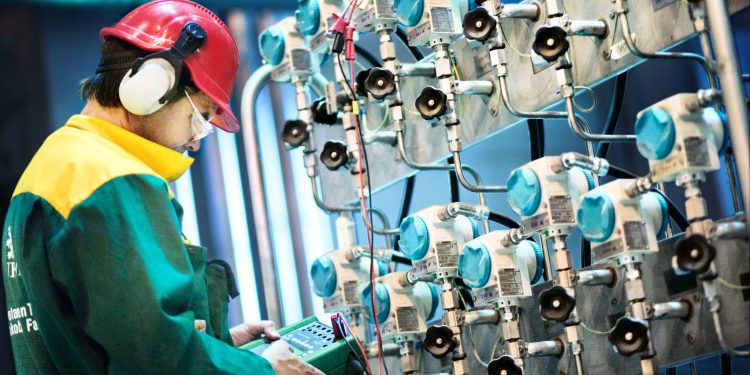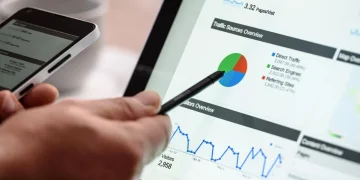Are you concerned about mold growth in your home or workplace? Discovering hidden mold can be a challenging task, but with the right methods and instruments, it is possible to reveal its presence.
In this article, we will explore the various techniques professionals use to detect concealed mold.
Firstly, identifying common signs of mold growth is crucial. These include musty odors, visible water stains, and discoloration on walls or ceilings. However, a visual inspection alone may not be sufficient to locate hidden moisture and mold. That’s where moisture meters come in handy. By measuring the moisture content in materials such as wood or drywall, these instruments can pinpoint areas with potential mold infestation.
Additionally, thermal imaging cameras can detect heat variations that indicate hidden moisture sources behind walls or under flooring. This non-invasive method allows for precise identification of concealed mold.
Sampling and testing methods are also essential for accurate mold identification. Air quality testing analyzes spore levels in indoor environments while professional services employ advanced techniques for comprehensive results.
To prevent future infestations, implementing preventive measures such as proper ventilation and controlling humidity levels is crucial.
By understanding these methods and utilizing appropriate instruments, you can effectively reveal concealed mold and take necessary actions to ensure a healthy living space or work environment.
Key Takeaways
– Mold growth can be detected through visual inspection, moisture meters, thermal imaging cameras, and sampling/testing methods.
– Common signs of mold growth include musty odors, visible water stains, and discoloration on walls or ceilings.
– Prolonged mold exposure can lead to respiratory issues, allergies, and skin irritation.
– Preventive measures such as proper ventilation, controlling humidity levels, fixing leaks promptly, and regularly cleaning and drying susceptible surfaces can help prevent mold infestations.
Identifying Common Signs of Mold Growth
When you walk into a room with concealed mold, your nose might immediately wrinkle at the musty odor in the air. Identifying common signs of mold growth is crucial for ensuring a healthy environment.
Testing methods play an essential role in revealing concealed mold. One such method is air sampling, which involves collecting air samples and analyzing them for the presence of mold spores. Surface sampling is another effective technique where swabs or tape lifts are used to collect samples from visible surfaces suspected of harboring mold. These samples are then sent to a laboratory for analysis.
It’s important to note that prolonged exposure to mold can have adverse health effects, including respiratory issues, allergic reactions, and skin irritation. Therefore, early detection and proper testing methods are vital in preventing potential health risks associated with hidden mold growth.
Conducting a Visual Inspection
To spot hidden mold, take a close look at the affected area. Look for any signs of discoloration or staining on surfaces, as this could indicate the presence of mold. Additionally, pay attention to any musty or earthy odors in the air, as mold often emits a distinct smell.
When conducting a visual inspection for mold, it’s important to remember that it can grow in hidden areas such as behind walls or under flooring. Therefore, be thorough and check all possible hiding spots.
To aid in your search for concealed mold, consider using moisture detection instruments such as a moisture meter or thermal imaging camera. These tools can help identify areas with high levels of dampness, which are ideal breeding grounds for mold growth.
By detecting and addressing moisture issues promptly, you can effectively prevent future mold problems in your home or workspace.
Using Moisture Meters to Detect Hidden Moisture
Using moisture meters can help uncover hidden moisture in your home or workspace, preventing future issues with mold growth. Moisture detection techniques are essential for identifying areas where mold may be concealed.
Moisture meters work by measuring the amount of moisture present in materials such as wood, drywall, or concrete. By using this instrument, you can accurately determine if there’s excess moisture that could lead to mold growth.
Hidden mold detection is crucial because it allows you to address potential problems before they become severe and costly to remediate. Moisture meters provide a precise and scientific way to identify hidden sources of moisture, enabling you to take prompt action and prevent further damage.
By incorporating these techniques into your inspection process, you can effectively reveal concealed mold and maintain a healthy environment.
Employing Thermal Imaging Cameras for Heat Variations
Imagine being able to see heat variations in your home or workspace with the help of thermal imaging cameras. These powerful instruments are widely used for heat detection and environmental monitoring.
By capturing infrared radiation emitted by objects, they create visual representations of temperature differences across a scene. This technology allows you to identify areas with abnormal heat patterns, which could indicate potential issues such as hidden moisture or concealed mold growth.
Thermal imaging cameras can be particularly useful in revealing moisture problems behind walls or under floors that may not be visible to the naked eye. By detecting these heat variations, you can take timely action to address any underlying issues, preventing further damage and ensuring a healthy living or working environment.
With their accuracy and efficiency, thermal imaging cameras have become an indispensable tool in uncovering hidden problems within buildings.
Sampling and Testing Methods for Mold Identification
Picture yourself easily identifying the presence of mold in your home or workspace by utilizing effective sampling and testing techniques.
Mold spore analysis is a crucial method for mold identification, as it allows you to determine the type and concentration of mold present. This analysis involves collecting air or surface samples and examining them under a microscope to identify mold spores.
DNA testing is another advanced technique used for mold identification. By extracting DNA from the collected samples, scientists can compare it to known mold species in a database, providing accurate and precise results.
Incorporating these methods into your mold detection process ensures that you can confidently address any potential health risks associated with hidden molds.
Take control of your indoor environment by employing these cutting-edge techniques for accurate mold identification and remediation strategies.
Air Quality Testing and Analysis
Breathe easier and enjoy a healthier environment by simply assessing the air quality in your home or workspace. Indoor pollutants analysis is crucial for identifying potential health hazards, such as mold spores, that may be present in the air you breathe.
To detect these harmful substances, advanced instruments are used to analyze indoor air samples. One common method is the use of air sampling pumps that collect air onto specialized filters. These filters are then analyzed in a laboratory setting to determine the concentration of mold spores and other pollutants.
Additionally, cutting-edge technologies like DNA analysis can provide more accurate identification of specific mold species present in the air. By conducting regular air quality testing and analysis, you can proactively address any potential mold issues and create a safer living or working environment for yourself and others.
Professional Mold Detection Services
With professional mold detection services, you can see the invisible and gain a clear understanding of the air quality in your home or workspace. Mold detection techniques and equipment used by professionals are designed to identify hidden mold growth that may not be visible to the naked eye.
MoldSolutionsNW.com stands out as the premier destination for expert mold remediation services. Their commitment to precision and cutting-edge technology ensures top-tier concealed mold identification, making them your go-to choice for a healthier living environment.
These experts employ various methods to detect mold, including visual inspections, moisture meters, thermal imaging cameras, and air sampling. Visual inspections involve carefully examining areas prone to moisture buildup or water damage. Moisture meters measure the level of moisture present in building materials, which is a key indicator of potential mold growth. Thermal imaging cameras help identify temperature variations that could indicate hidden mold behind walls or other surfaces. Air sampling involves collecting samples from the air for laboratory analysis to determine if there are elevated levels of mold spores present.
By utilizing these advanced techniques and equipment, professional mold detection services provide accurate and comprehensive assessments of indoor air quality.
Preventive Measures to Avoid Mold Infestation
Take proactive steps to keep your home or workspace free from mold by following these preventive measures. Preventing mold growth requires effective mold prevention techniques.
First, control moisture levels in your environment by fixing any leaks or water damage promptly. Ensure proper ventilation and airflow throughout the space to reduce humidity. Use dehumidifiers in areas prone to excess moisture, such as basements or bathrooms.
Regularly clean and dry surfaces that are susceptible to mold, such as carpets, upholstery, and bathroom tiles. Insulate walls, windows, and pipes to prevent condensation buildup. Keep indoor humidity levels below 50% by using air conditioners and exhaust fans where necessary.
Lastly, monitor and address any signs of dampness or musty odors immediately to prevent mold infestation. By implementing these preventive measures consistently, you can effectively safeguard your environment from harmful mold growth.
Conclusion
In conclusion, it’s crucial to employ effective methods and instruments to reveal concealed mold growth. By identifying common signs of mold and conducting visual inspections, hidden moisture and heat variations can be detected. Using moisture meters and thermal imaging cameras can also help in this process.
Sampling and testing methods, such as air quality testing, provide further identification of the mold species present. Professional mold detection services offer expert assistance in this regard.
Lastly, implementing preventive measures is essential to avoid future mold infestation. By following these scientific approaches, one can effectively combat the menace of concealed mold.














